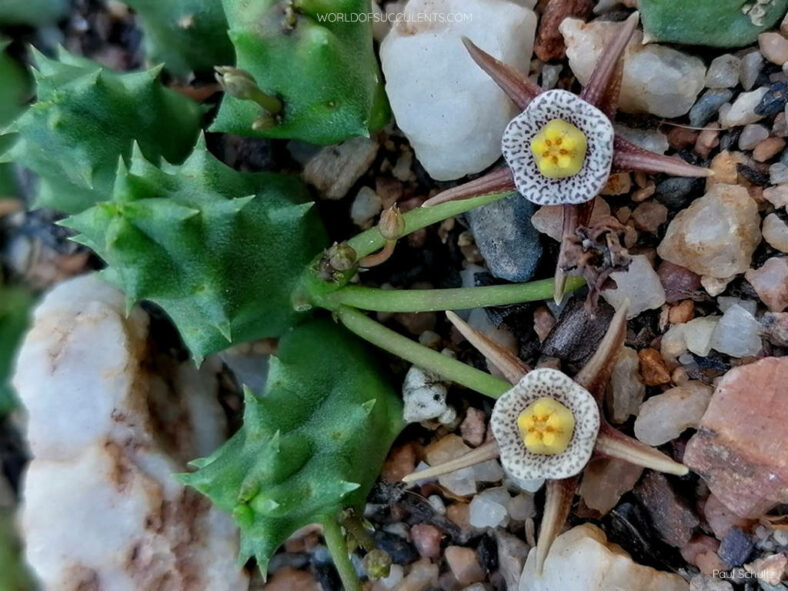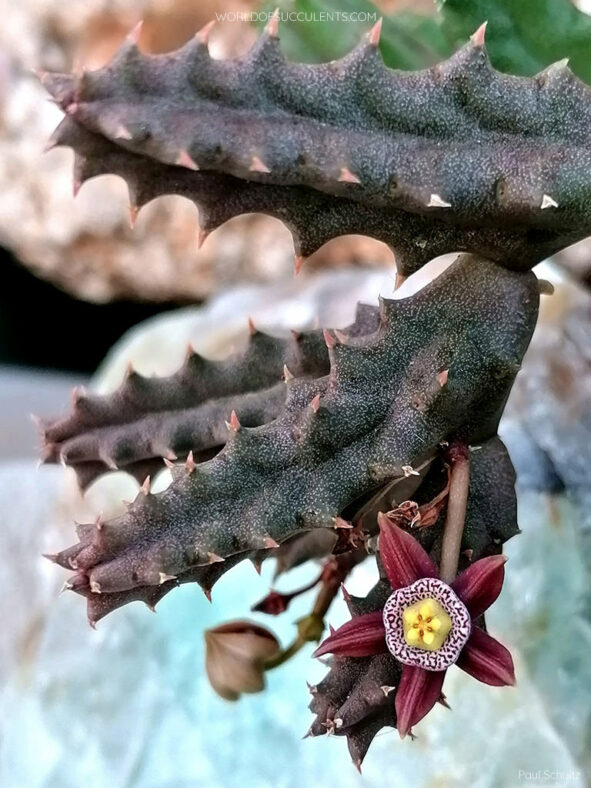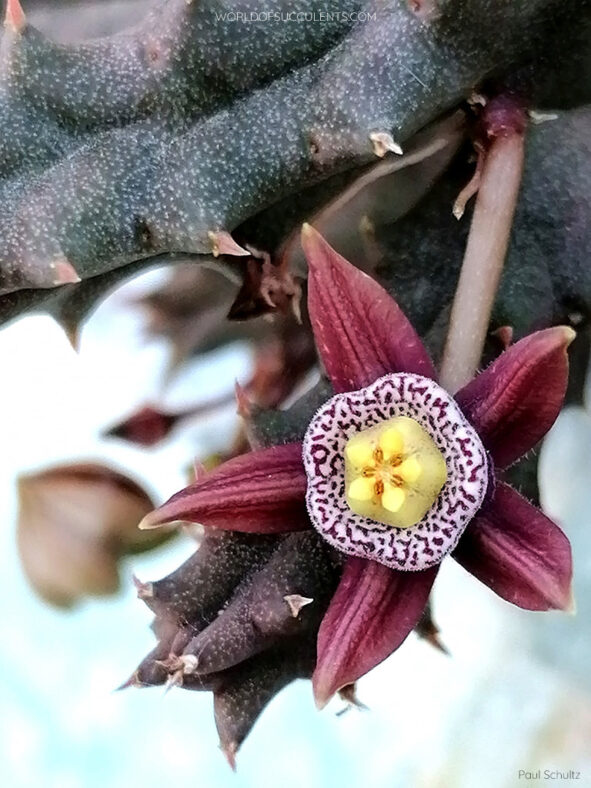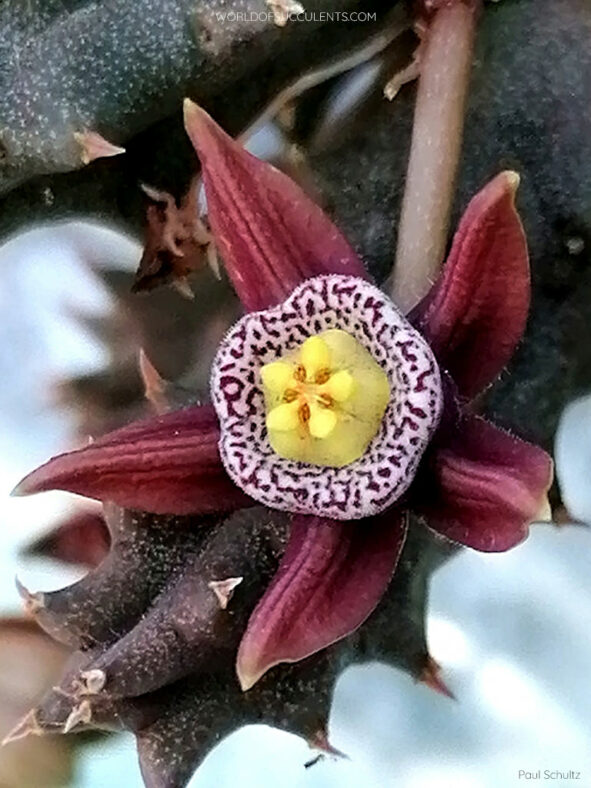Duvalia maculata is a low-growing succulent with short, fleshy stems and beautiful, scentless flowers. It was discovered in 1900 by Eustace Pillans near Aberdeen Road in the Eastern Cape province of South Africa.
Scientific Name
Duvalia maculata N.E.Br.
Synonym(s)
Ceropegia minuta, Duvalia minuta
Scientific Classification
Family: Apocynaceae
Subfamily: Asclepiadoideae
Tribe: Ceropegieae
Subtribe: Stapeliinae
Genus: Duvalia
Etymology
The specific epithet "maculata" (pronounced "mak-yuh-LAH-tuh") means "stained, spotted" and refers to the speckled ring-like structure (annulus) of the flowers.
Origin
Duvalia maculata is native to South Africa and Namibia. It grows on stony slopes under bushes.
Description
Duvalia maculata is a dwarf succulent with decumbent, mostly short, green to purplish stems. It forms compact to diffuse clumps that can reach up to 6 inches (15 cm) in diameter. The stems are ovoid to cylindrical, with conical tubercles fused near the base into usually four angles along the stem. They can grow up to 2.4 inches (6 cm) long and 0.7 inches (1.8 cm) thick. The tubercles taper gradually into a deltoid acute leaf rudiment subtended by two tiny teeth.
During the fall, Duvalia maculata produces inflorescences with 1 to 8 flowers, mainly in the lower half of the stem. The flowers can reach up to 1 inch (2.5 cm) in diameter. The outside of the corolla is pale green to brownish, while the inside is purplish, reddish to yellowish brown, and somewhat shiny on the lobes. The annulus is about 0.3 inches (0.8 cm) across, often pentagonal, cream to white, speckled with pale brown, and covered with fine papillae. The corona is yellow to pale orange.

How to Grow and Care for Duvalia maculata
Light: Duvalia maculata prefers full sun but will benefit from light shade during the hottest summer days. Indoors, place the plant near the brightest window of your home because it will stretch if it does not receive enough sunlight. Avoid abruptly moving a plant adapted to lower light levels to full sun to prevent sunburn.
Soil: You can use a commercial potting soil mix for succulents or prepare your own with 50 to 70 % mineral grit, such as coarse sand, pumice, or perlite.
Temperature: The plant thrives in warm outdoor environments with low to moderate humidity. It does not like winter cold and should remain fairly dry and warm during its dormancy. Duvalia maculata grows best in USDA Plant Hardiness Zones 11a to 11b, with average minimum winter temperatures ranging from 40 to 50 °F (4.4 to 10 °C).
Watering: It has typical watering needs for a succulent. During the growing season, from spring to fall, water the plant thoroughly and allow the soil to dry between waterings. When it goes dormant in winter, it needs almost no water, about once a month.
Fertilizing: Fertilizing is a good idea to keep the plant healthy and thriving. Feed it with water-soluble fertilizer diluted to half the recommended strength, but only when the plant is actively growing.
Repotting: Repot Duvalia maculata in spring, just before the growing season. It has shallow roots and does not require too much soil to grow. Always pick a container with drainage holes.
Propagation: The best way to propagate this succulent is by stem cuttings. To ensure good rooting, take cuttings during the growing season. The plant is also easy to start from seeds in spring.
Learn more at How to Grow and Care for Stapeliads.
Toxicity of Duvalia maculata
Duvalia maculata has no toxic effects reported, so it is safe for growing around kids and pets.
Links
- Back to genus Duvalia
- Succupedia: Browse succulents by Scientific Name, Common Name, Genus, Family, USDA Hardiness Zone, Origin, or cacti by Genus
Photo Gallery
Click on a photo to see a larger version.


